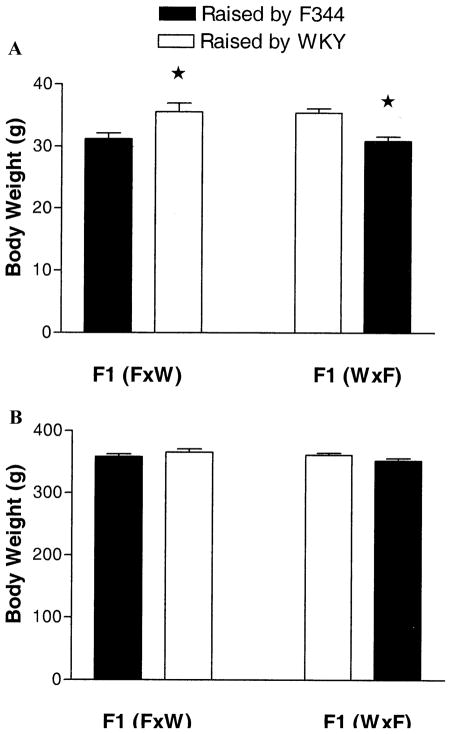Figure 3.
Effect of cross-fostering on body weight of pups at weaning (21 days of age, n = 25 pups/group) and adulthood (4 months of age, n = 25 adults/group). (A) Means ± SEM for body weight at weaning, separated by cross and the maternal environment in which the pups were raised. There was a significant main effect of environment, with offspring raised by WKY weighing more at weaning than offspring raised by F344, p < .001. Importantly, fostering status did not affect body weight of pups. That is, foster pups and native pups raised by WKY mothers (and foster pups and native pups raised by F344 mothers) weighed the same. (B) Body weight at 4 months of age is not significantly different in any of the conditions, irrespective of genotype or environment. F344, Fischer 344; WKY, Wistar Kyoto.

